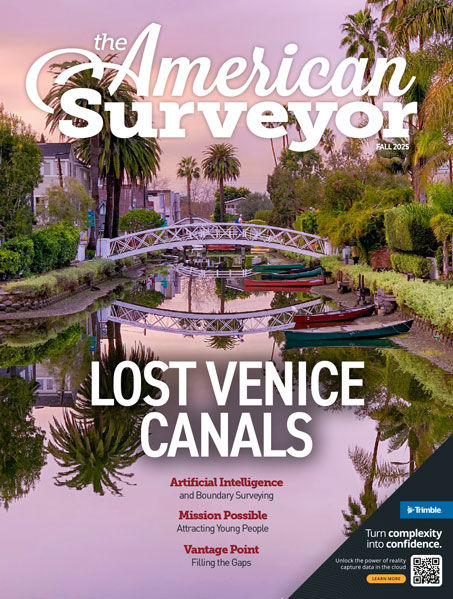As Scanning Goes Mobile, LiDAR Leader Shows 12 Diverse Integrations At World’s Largest Surveying/Mapping Show
Morgan Hill, Calif. (October 6, 2015) – No longer tethered to tripods and static data capture, mapping and surveying have gone mobile, thanks in part to innovative implementations built around Velodyne LiDAR’s compact 3D real-time sensors — as the company demonstrated in 12 diverse integrations at the recent InterGEO 2015 in Stuttgart, Germany.
Drawing attendees from around the globe, InterGEO 2015, held Sept. 15-17, is the world’s largest surveying and mapping tradeshow, showcasing the latest technologies to capture the world in 3D.
Where surveyors have traditionally mounted LiDAR scanners on tripods to get the job done, mobility is now the watchword, with lightweight scanners positioned on mobile platforms, gathering data while continuously moving through the environment — without stopping traffic or placing measuring crews in harm’s way. Mobile vehicles equipped with 3D LiDAR, video and GPS/IMU are already a common sight in major cities, soon to be joined by backpack-based mobile mapping for areas vehicles can’t reach – and much more, as InterGEO previewed:
• Backpack-based surveying. At InterGEO, Velodyne’s compact VLP-16 LiDAR Puck – a lightweight 16-channel 3D, real-time scanner — proved an integral part of systems on display by Microsoft and Leica Geosystems. Leica’s backpack — which received the prestigious InterGEO Wichmann Award during this year’s show — sported two of Velodyne’s LiDAR Pucks in order to obtain almost full 360° coverage in horizontal and vertical directions, with remarkable point cloud density.
• Vehicle-based mapping. Leica also displayed its established Pegasus II vehicle-based mobile mapping solution, with the optional Velodyne HDL-32E 32-channel sensor on board. Topcon (https://www.topconpositioning.com/mass-data-and-volume-collection/mobile-mapping/ip-s3), another major player exhibiting vehicle-based mobile mapping solutions, showcased its IP-S3, which also deployed Velodyne’s HDL-32E, in combination with a camera and its world class, in-house navigational equipment.
• Segway-driven mapping. Swedish company Satlab (http://www.satlabgps.com/en.aspx) turned heads on the InterGEO show floor with a novel, real-time 3D integration of Velodyne’s compact VLP-16 on a Segway, complementing its vehicle-based mapping solution, also on display at InterGEO, built around the HDL-32E.
• Marine implementations. In addition to displaying an HDL-32E-based mobile mapping solution under its Zenith brand, Dutch innovator Seabed (http://www.seabed.nl/) combined Velodyne’s 16-channel LiDAR Puck with a multi-channel sonar scanner, enabling 3D measurements above the water line – and, submerged, below the water line.
• Airborne mapping. A number of system integrators at InterGEO offered airborne LiDAR solutions, among them leading UAV provider Phoenix Aerial Systems (http://www.phoenix-aerial.com/). Phoenix Aerial showcased its third generation AL3 platform using the HDL-32E with application examples ranging from power line inspection to oil & gas and in the mining sector. Phoenix’s attractively priced “Scout” system sported a lightweight VLP-16 for similarly demanding applications.
• Forest management. Specializing in UAV-based LiDAR solutions used for forest management, LiForest’s Li-Air (http://www.liforest.com/?p=14132) captured point clouds with both Velodyne’s sensors, the HDL-32E and the VLP-16. The Li-Air solution analyzes the point clouds to isolate individual trees and establish databases that contain tree height, volume and density measurements — all attributes deemed vital when managing a commercial forest effectively.
“As InterGEO demonstrated conclusively, the power and versatility of our LiDAR sensors is unprecedented in the industry,” said Mike Jellen, Velodyne president. “Across a range of market segments and applications, our scanners are providing essential enabling technology. As our relationships with our integration partners continue to grow and deepen, we look forward to innovating in ways that enrich users and build markets.”
About Velodyne LiDAR
Founded in 1983 and based in California’s Silicon Valley, Velodyne Acoustics, Inc. is a diversified technology company known worldwide for its high-performance audio equipment and real-time LiDAR sensors. The company’s LiDAR division evolved after founder/inventor David Hall competed in the 2004-05 DARPA Grand Challenge using stereovision technology. Based on his experience during this challenge, Hall recognized the limitations of stereovision and developed the HDL-64 high-resolution LiDAR sensor. Velodyne subsequently released its compact, lightweight HDL 32E sensor, available for many applications including UAVs, and the new VLP-16 LiDAR Puck, a 16-channel real-time LiDAR sensor that is both substantially smaller and dramatically less expensive than previous generation sensors. Market research firm Frost & Sullivan has honored the company and the VLP-16 with its 2015 North American Automotive ADAS (Advanced Driver Assistance System) Sensors Product Leadership Award. Since 2007, Velodyne’s LiDAR division has emerged as the leading developer, manufacturer and supplier of real-time LiDAR sensor technology used in a variety of commercial applications including autonomous vehicles, vehicle safety systems, 3D mobile mapping, 3D aerial mapping and security. For more information, visit www.velodynelidar.com. For the latest information on new products and to receive Velodyne’s newsletter, register here.
